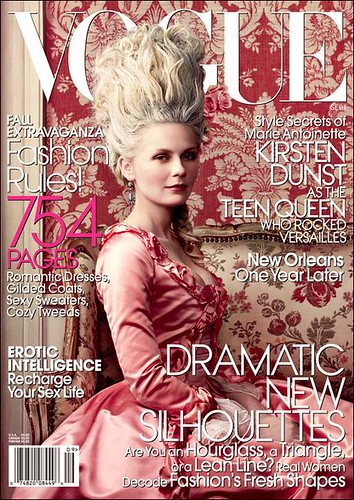I didn't want to comment on
V magazine's size issue until I had read and taken the time to digest the whole thing--even though we all saw about 85% of the photos well before the magazine was released. So I was happy to get my hands on a copy when I was out and about this weekend.
It seems that the fashion community is finally starting to realize how unrealistic and potentially damaging it is for them to send the message that looking like a pubescent girl at age 25 is ideal. More importantly, they are actually starting to do something to change it. Plus size model Crystal Renn is becoming more of a household name after starring in a few
Glamour editorials and, of course, makes an appearance in V's "One Size Fits All" spread, which features her modeling the same outfit as "straight-sized" model Jacquelyn Jablonski and looking really, really good. I didn't love that particular editorial though. I get the message: Plus sized woman can look just as good as (or better than!) thin models wearing the exact same clothes. But the spread reminded me of one of those "Spot the Differences" games in Highlights for Children. I don't think it was their intention, but I think the shoot seemed to draw more attention to how different the models look instead of how marvelously they both wear the clothes.

I liked the "Curves Ahead" editorial that featured plus-sized models only, but I didn't like that the entire focus of the photos seemed to be on their bodies. When Anja Rubik or Karlie Kloss model, they are showing off clothes or cosmetics or shoes. When they stuck these models behind the camera, the message seems to be, "they might be a size 14, but they still look good!"
What it all boils down to, for me, is this marginalization of so-called plus sized models. They seem to exist so magazine editors, photographers, designers and so on and so forth can be appear less shallow and more open minded to different types of beauty. I don't think it's fair for these gorgeous and talented models to be used so critics will get off the fashion community's back about glorifying unrealistic body types.
I'm not saying the editors of V didn't have their heart in the right place, because I think they did. And mostly, I think the issue was a success. I just wish we could do away with the whole plus-sized/straight-sized label and just call them models. And not comment on a woman's body as if it is ours to dissect. Because at the end of the day, fashion is about beauty and creativity and fantasy. And you need diversity for all those things to exist.












